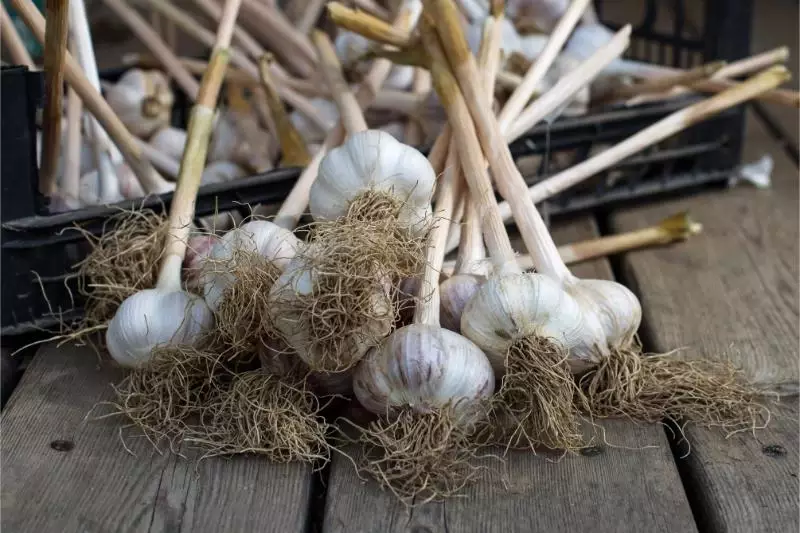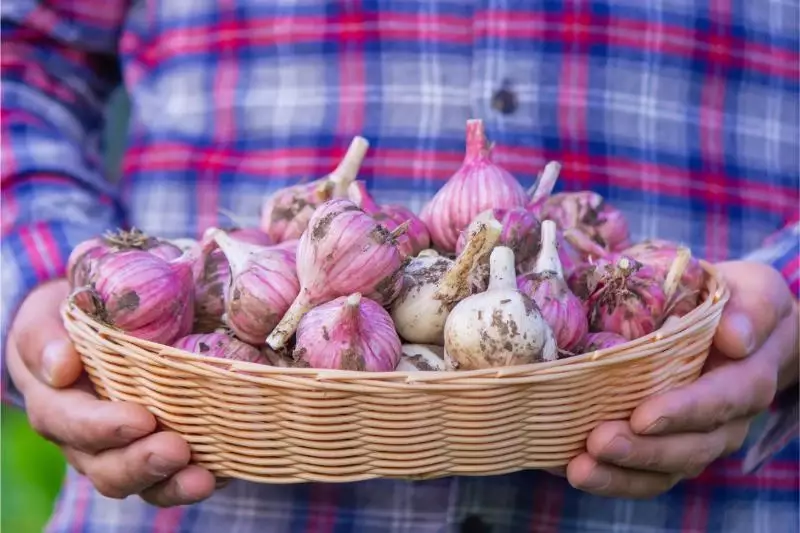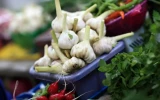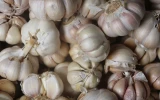3 Best Types of Garlic Grown in Ontario
Ontario, Canada, is home to a rich variety of garlic, with over 450 types grown in the region. Among these, three stand out for their unique flavors and culinary uses.
The popular types of garlic grown in Ontario are Music, Russian Red, and German White. Music is known for its large bulbs and strong flavor; Russian Red is distinguished by its purple-striped skin and large cloves; and German White has a strong, spicy flavor and stores well over the winter.
These varieties thrive in Ontario's climate. The cold winters help with the vernalization of garlic cloves, which is a process that triggers the cloaking to develop into a bulb. The summer heat then helps to mature the bulbs, resulting in a harvest that typically occurs in July and August.
Summary
- Music, Russian Red, and German White are types of hardneck garlic, which means they have a stiff central stalk and typically produce a flower stalk or "scape," which is also edible.
- Ontario celebrates its garlic diversity through festivals like the Toronto Garlic Festival, emphasizing the community's engagement with garlic cultivation.
- Garlic growers in Ontario adopt organic pest control methods and crop rotation to manage pests like the leek moth and garlic bloat nematode, adhering to sustainable agricultural practices.

On this page:
Music Garlic
Music garlic is a popular Porcelain variety known for its hardiness in cold climates, making it an excellent choice for Ontario growers. The ability to thrive in a range of soil conditions and a good storage life further enhance its appeal.
Characteristics
- Origin: Brought to Ontario from Italy, Music garlic is known for its large, easy-to-peel cloves.
- Flavor: Offers a rich, medium-hot flavor that stands out in a variety of dishes.
- Clove count: 4-7 large cloves per bulb.
Planting tips
- Plant in well-drained soil, in a sunny spot, during October for a summer harvest.
- Space cloves about 6 inches apart and 2 inches deep.
When you're preparing to plant garlic in Ontario, fall is the ideal time, allowing Music garlic to establish roots before the freeze. Your aim should be to choose well-drained soil rich in organic matter to provide the best growing conditions. Music garlic requires a colder climate to thrive, making Ontario's cold winters beneficial.

Your yield will benefit from a proper planting depth and spacing; place cloves six inches apart and with rows spaced 10 inches. This not only aids in growth, but simplifies weed control.
Covering your planted cloves with mulch can protect them from severe weather conditions and help retain moisture in the soil.
During the growing season, hardneck garlic varieties like Music produce scapes, which are edible flower stems. For maximum bulb growth, you should remove these scapes in spring.
Culinary uses
- Perfect for roasting, its robust flavor enhances any dish, from pasta sauces to marinades.
Music garlic, a hardneck variety, boasts large bulbs with a spicy yet pleasant flavor. Its origins trace back to Italian roots, but today it's a top choice for growers across Canada, especially in Ontario, due to its robust taste and quality. The bulbs are recognizable by their large, pink-purple cloves, which cater not only to a gardener's aesthetic but also to a chef's palette.
Russian Red Garlic
Russian Red, a hardy Rocambole garlic, produces robust bulbs that you'll find well-suited to Ontario's climate.
When you plant your Russian Red, expect each bulb to develop numerous large, easy-to-peel cloves. The soil fertility and type are important; it thrives well in a range of soils, provided they are well-drained.
Russian Red garlic is prized for its complex, spicy flavor, making it a favorite for food enthusiasts and market gardeners alike. Its strong taste and easy-peel cloves are perfect for adding depth to dishes.
Planting Russian Red
When planting Russian Red, you should aim for fall planting—ideally in October before the ground freezes. This gives your plants a good start, as they need to experience cold to stimulate bulb development. For best results, pick a well-draining site with plenty of organic matter; sandy loam to light clay soils are suitable.

To protect your crops from pests like bulb mites, ensure proper crop rotation and consider adopting integrated pest management practices. Plant your cloves pointed side up and allow for adequate space between them for bulb expansion.
Russian Red is an overwintering plant, so it will spend the winter under the snow and resume growth in the spring.
Harvesting Russian Red
Your garlic should be ready for harvesting when the lower leaves start to brown. After harvesting, allow bulbs to dry by hanging them in a covered, ventilated area before storing.
Russian Red is known for its longer storage life, making it a practical choice for extended use. Keep an eye on the weather and get your cloves in the ground before November to ensure a successful garlic crop.
To learn how to harvest garlic the right way, here's a comprehensive guide.
German White Garlic
Another standout Porcelain variety, German White, delivers large bulbs commonly comprised of 4 to 6 hefty cloves. Your taste buds will be greeted with a bold, somewhat spicy flavor that lingers on the palate.
German White is appreciated among growers for its consistent performance in Ontario's soil, offering great storage capabilities post-harvest.

German White, often categorized among the Porcelain group of hardneck garlic, thrives in the diverse climates of Ontario. This variety is recognized for its large cloves that are encased in a thick and durable parchment-like skin.
When you plant German White, you can expect a robust flavor that offers a great balance between sharpness and richness.
Soil preferences
German White prefers well-drained soil, with a slight preference for clay soil, which is common in many parts of Ontario. This type of garlic is quite hardy, making it a good choice if you are aiming for a low-maintenance garden.
Clove characteristics
- Color: Typically a creamy color with a hint of purple
- Size: Large, typically 4–7 cloves per bulb
- Shape: Symmetrical with a pointy tip
You'll find that the cloves of German White are relatively easy to peel thanks to their size. They are ideal for culinary use where whole cloves are preferred, like in roasts or stews. With its potent but not overpowering flavor, German White is a versatile garlic to have in your kitchen.
Planting German White
When placing your orders for German White, aim to plant in the fall. This timing allows the garlic to establish roots before the frost and then benefit from the winter's chill to promote clove differentiation. Come spring, you'll be rewarded with robust plants ready to mature into the large, flavorful bulbs that German White is known for.
Consistent care without overwatering will lead to the best yield. German White is sought after not only for its culinary uses but also for its storage capabilities. Properly cured bulbs can be stored for months, providing you with a long-lasting taste of Ontario's finest garlic.
Are you planning to grow garlic for profit? Here's how.
Garlic festivals
The love for garlic in Ontario is celebrated through garlic festivals. One of the most well-known is the Toronto Garlic Festival, which showcases the province's garlic harvest with farmers, chefs, and artisans coming together to celebrate and sell their garlic and garlic-related products.
These festivals often feature garlic tastings, cooking demonstrations, and educational talks.
Pest management
Ontario garlic growers must manage pests and diseases without the use of many of the chemicals that might be used in other jurisdictions. The leek moth and garlic bloat nematode are two pests that can affect garlic crops in Ontario. Farmers often use crop rotation and organic pest control methods to manage these challenges.



